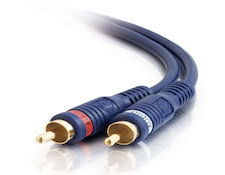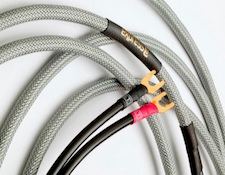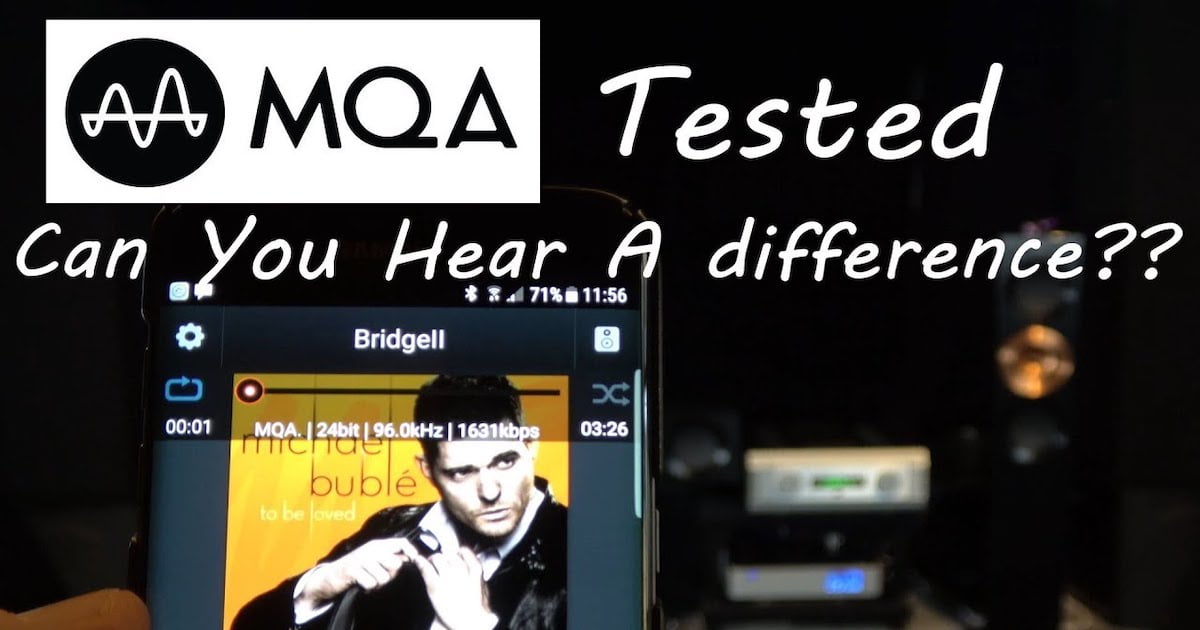It’s the time of year for saving money!
Back on April 3, 2014, Audiophile Review.com published an article by me called “Do Cables Really Make A Difference?”, in which I proposed a very simple experiment that anyone could do at home and that would, I thought, finally put an end to the constant warfare among audiophiles over whether or not cables can actually make an audible difference to the sound of a Hi-Fi System.
 The test, itself, was, I thought, simple enough; cost little enough (nothing in most cases); and was easy enough that practically everyone who read about it would try it (or be present when someone else tried it), and would, therefore have personal first-hand experience to rely on in making his own decision. That’s what I thought, but it’s not at all what actually happened.
The test, itself, was, I thought, simple enough; cost little enough (nothing in most cases); and was easy enough that practically everyone who read about it would try it (or be present when someone else tried it), and would, therefore have personal first-hand experience to rely on in making his own decision. That’s what I thought, but it’s not at all what actually happened.
Just as a reminder to those of you who actually read that article, (or to bring those of you who didn’t reads it up to speed,) the test consisted of getting a pair of the cheap-or-free “throwaway” interconnect cables that manufacturers used to include in the package whenever you bought a receiver, a CD player, or some other piece of mass-market hi-fi gear, and cutting them so that the outer jacket (but NOT the shielding) of each of the two cables could be removed as one long piece. After that had been done, I said to remove the jacket (just to make sure that, when necessary, it would come off easily) and put it back on again, just as it had been originally. After doing that, I said to hook the cables (jacket-ON) up to your system and “burn” them in, WITHOUT listening to them until they had at least several hours of run-time on them. Then, after they had been burned-in as much as necessary (cheap cables tend to burn-in quickly), I said to do some serious listening to your system through them with the jackets still ON. After you had done that for long enough to feel comfortable that you knew what the cables sounded like “jackets-ON”, on as many different pieces of program material as you cared to use, I said to peel the jackets OFF (by just grabbing the jacket on each cable at one end and pulling) and listen to your system again, through the now-jacketless cables, on all of the same program material that you had listened to before.
That struck me as the perfect test: Not only did it – as all good scientific testing MUST do – change only one single variable (the cables’ outer jackets), but, by using the SAME PAIR of cables with and without jackets, it guaranteed that all UN-changed factors (the connectors, for example, the shielding, and the wire, itself) would be truly constant.
Even so, maybe people didn’t understand it. Or maybe it was too much work for them. Or maybe they didn’t have any “throwaway” cables that they were willing to sacrifice. Or maybe they just didn’t care enough about the whole subject of cables to try it. Whatever the case, out of perhaps as many as a hundred thousand people all over the world who have seen the test article; out of, thus far, nearly four thousand people who have shared it (presumably with at least another four thousand friends); and out of hundreds of people who have commented on it (including 59 to date who have posted to the article, itself), no one, NOT EVEN ONE SINGLE PERSON (as nearly as I can tell), has actually done the test!
 Even so, even without even without knowing what the proposed test was supposed to do or not do, people were certainly willing to voice their opinion: One, who was fairly typical of the whole “We don’t need no stinkin’ (read: ‘facts’ instead of ‘badges’)…” school of commenters, wrote that: “It doesn’t really matter how much you mess with an interconnect, it will sound the same regardless unless you deliberately add inductance resistance or capacitance. The insulation dielectric doesn’t matter in the slightest. This is a waste of time.”
Even so, even without even without knowing what the proposed test was supposed to do or not do, people were certainly willing to voice their opinion: One, who was fairly typical of the whole “We don’t need no stinkin’ (read: ‘facts’ instead of ‘badges’)…” school of commenters, wrote that: “It doesn’t really matter how much you mess with an interconnect, it will sound the same regardless unless you deliberately add inductance resistance or capacitance. The insulation dielectric doesn’t matter in the slightest. This is a waste of time.”
Oh? And how does he know that, unless someone somewhere actually did do some testing or some comparative listening and told him about it? And if that was the case, why should he (the writer) believe him (the person who told him)? Why should one experiment be worth doing (read: “believing”)
and another not? Another commenter provided the perfect counter, saying: “I love the “Voodoo” comments from people who dismiss the possibility that cables make a difference WITHOUT EVEN TRYING them! Blind belief in a “null result” is more “voodoo” tha(n) listening to (h)ear if there actually is one.[NOTE: typos (in parentheses) corrected by me]”.
Regardless of theory or counter-theory, and “voodoo” notwithstanding, one commenter DID make two ―at least apparently ― valid points: The first is that “…performing the task of removing the insulator as described would require the skill of a hand surgeon.” And the second is that “…the chief attitude to have in tests like this is to have NO EXPECTATIONS and do this with cables that may or may not sound “better” but may sound different due to construction and material differences.”
 In the light of what has gone before, and keeping both of these last sage observations in mind, here’s, another set of tests that you can do at home with ANY pair of cables (including both interconnects and speaker cables) of ANY quality or price point, and that require ABSOLUTELY NO TOOLS OR CUTTING of any kind. Hopefully that will remove all possible excuses and cause at least SOME of you to actually DO them!
In the light of what has gone before, and keeping both of these last sage observations in mind, here’s, another set of tests that you can do at home with ANY pair of cables (including both interconnects and speaker cables) of ANY quality or price point, and that require ABSOLUTELY NO TOOLS OR CUTTING of any kind. Hopefully that will remove all possible excuses and cause at least SOME of you to actually DO them!
The subject of these tests is cable directionality, another controversial issue that cable lovers accept as obvious but that is often dismissed as snake-oil and voodoo by the compulsive naysayers:.
Many high-end cable manufacturers claim that cables have a “preferred” direction, and that running them in the “right” direction (from “north” to “south”, for example, or from “source” to “load”) will sound better than running the exact same cables in the “wrong” direction (in this example, from “south” to “north” or “load” to “source”). At least three reasons (that I know of) have been given for why and how cables become directional: The first is that in the course of rolling the wire for the cables (crushing and stretching it to reduce its diameter from whatever it started at to the desired size) the crystal structure of the metal – whether copper, silver, or whatever alloy – gets “warped” and its ability to pass current is affected and given a directional preference. The second is that intrusions of copper oxide (in thin films, a known semiconductor) between the copper crystals making up the wire act as “micro-diodes” to establish a preferred direction of current flow (this applies to copper wire, only; silver oxide is not a semi-conductor). Neither of these reasons may apply (or at least apply in full measure) to cables made from wire produced by the “continuous casting” process, which claims to produce far fewer crystals per length of wire, with no warpage at all. The third reason has to do not with the wire of the cables, but with the cable’s shielding, if any. (Speaker cables are not normally shielded, and the interconnecting cables designed by me for XLO, for example, have shielding only on special order). Where shielding used, it must always be grounded or it won’t work, but grounding can be at either the source end, the load end, or both, depending on the cable manufacturer’s belief as to which give the best performance.
So, given all that, what are the tests? Simple, just listen to any familiar recording on your system the way it’s normally set up; then, listening always to that same recording, select any one set of cables anywhere in the system to be your test sample, and making sure that that set of cables is IN USE as you listen (don’t select the cables from your CD player if you’re going to be listening to phono) unplug one of the two cables and reverse its direction by plugging the end of the cable that was at the source into the load and vice versa and listen again. Then reverse it again (to restore it to its original direction of use) and listen again. Next, do exactly the same thing with the OTHER cable of the same pair: Reverse it, listen, reverse it again and listen again. Finally reverse BOTH cables and listen to them and then reverse them again (back to their original positions) and listen again.
Did you hear any differences? If not, you’re done. Case closed; just please write in to tell us all about it.
If you DID hear differences, though, which way sounded best? (You WERE talking notes, weren’t you?) If that wasn’t the way you have it now, re-plug the cables to their best-sounding positions and GO ON TO TEST AND OPTIMIZE THE DIRECTIONALITY OF ALL OF THE REST OF THE CABLES IN YOUR SYSTEM.
DO THAT, and then write in to tell us about it, either way. If it does make a difference, your system may sound better for it and if it doesn’t, you can point fingers, hoot, and jape.
See, either way you win!





